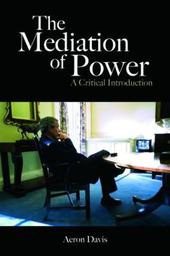
|
The Mediation of Power: A Critical Introduction
Paperback
Main Details
| Title |
The Mediation of Power: A Critical Introduction
|
| Authors and Contributors |
By (author) Aeron Davis
|
| Series | Communication and Society |
|---|
| Series part Volume No. |
v. 10
|
| Physical Properties |
| Format:Paperback | | Pages:232 | | Dimensions(mm): Height 234,Width 156 |
|
| Category/Genre | Political economy |
|---|
| ISBN/Barcode |
9780415404914
|
| Classifications | Dewey:302.23 |
|---|
| Audience | | Undergraduate | | Postgraduate, Research & Scholarly | | Professional & Vocational | |
|---|
| Edition |
New edition
|
| Illustrations |
5 black & white tables, 4 black & white line drawings
|
|
Publishing Details |
| Publisher |
Taylor & Francis Ltd
|
| Imprint |
Routledge
|
| Publication Date |
25 July 2007 |
| Publication Country |
United Kingdom
|
Description
The Mediation of Power investigates how those in positions of power use and are influenced by media in their everyday activities. Each chapter examines this theme through an exploration of some of the key topics and debates in the field, including: theories of media and power media policy and the economics of information news production and journalistic practice public relations and media management culture and power political communication and mediated politics new and alternative media interest group communications media audiences and effects. The debates are enlivened by first-hand accounts taken from over 200 high-profile interviews with politicians, journalists, public officials, spin doctors, campaigners and captains of industry. Tim Bell, David Blunkett, Iain Duncan Smith, Simon Heffer, David Hill, Simon Hughes, Trevor Kavanagh, Neil Kinnock, Peter Riddell, Polly Toynbee, Michael White and Ann Widdecombe are some of those cited.
Author Biography
Aeron Davis is a Senior Lecturer in Political Communication in the Department of Media and Communications, Goldsmiths College, London. He has published in the areas of political communication, media sociology, promotional culture and financial markets, and is the author of Public Relations Democracy (2002).
|